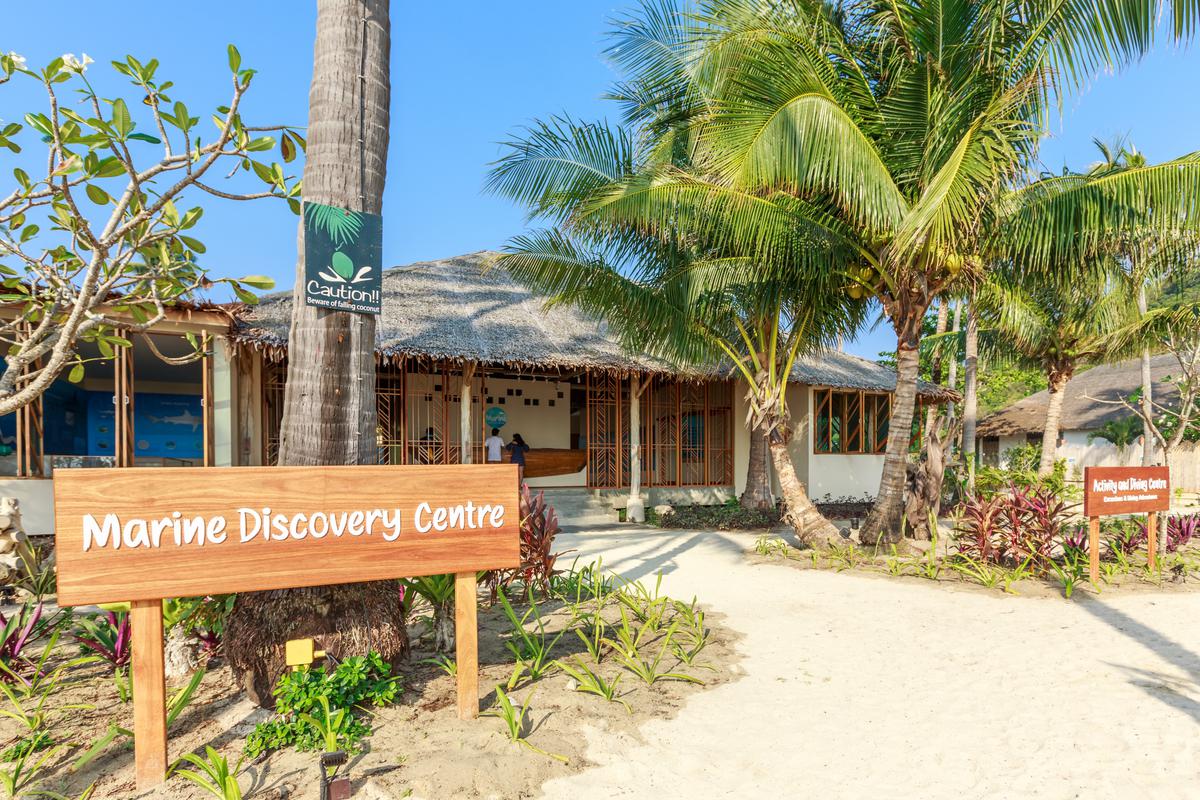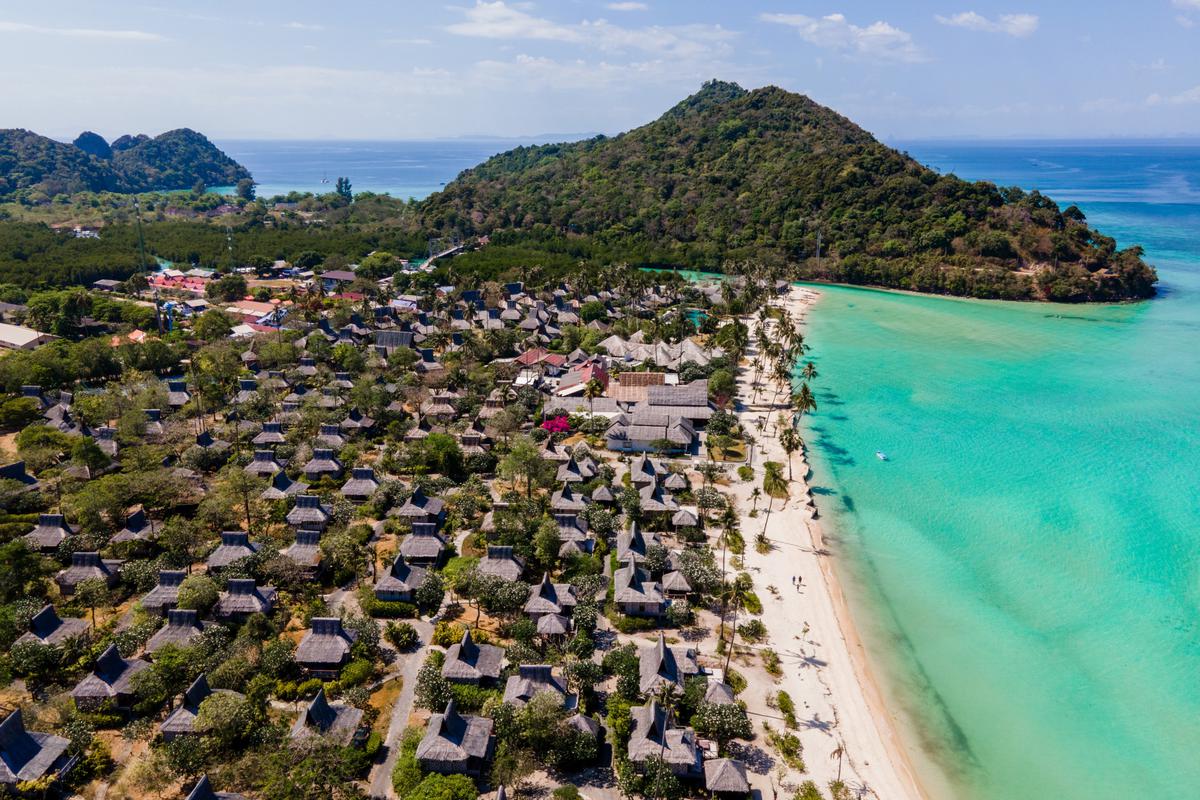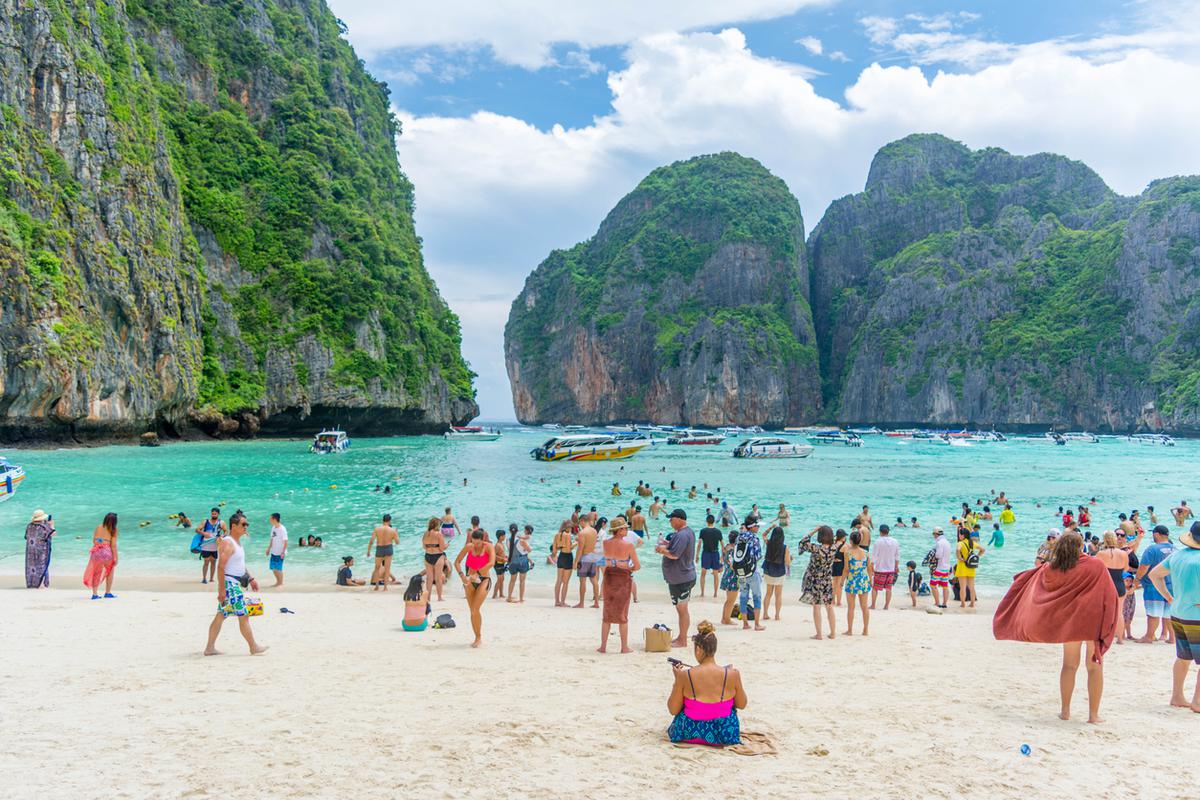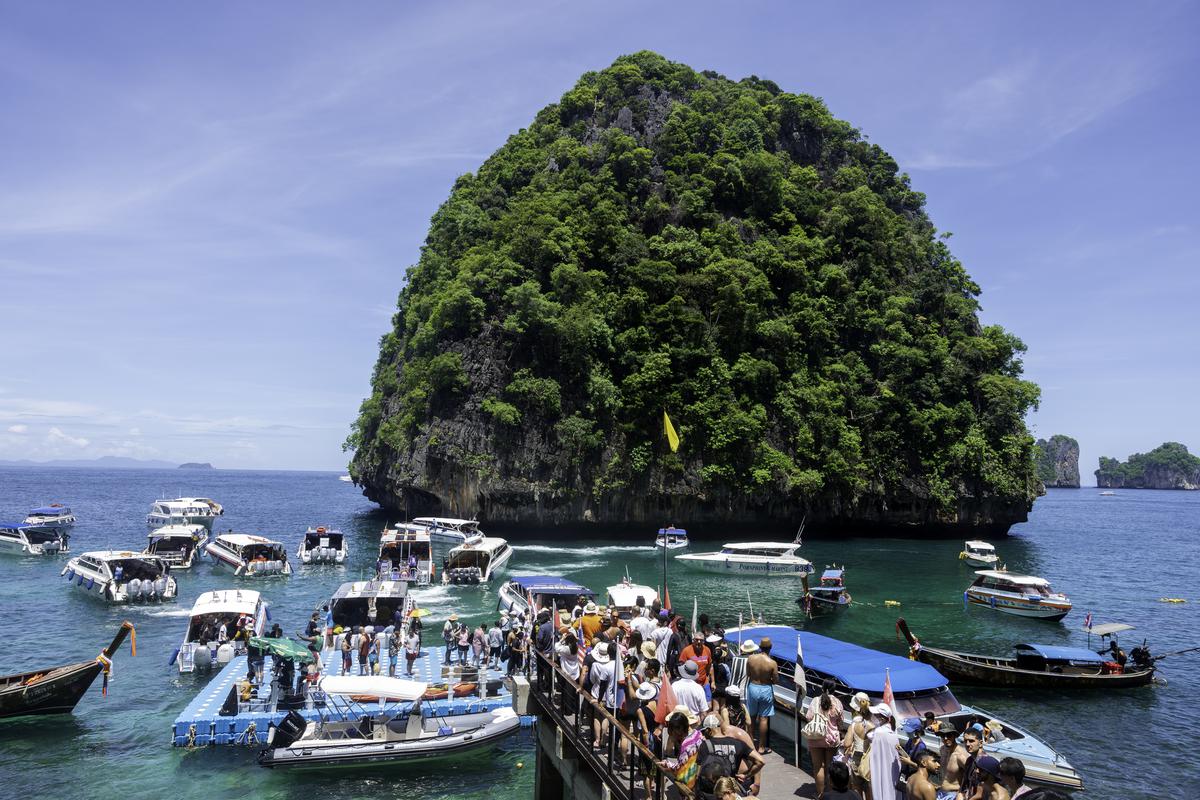Rejuvenated after a tourist-bereft, three-year-long hiatus, Thailand’s Andaman Coast is a beacon of hope for the successful restoration of nature’s ecological balance, amidst a renewed travel boom.
Rejuvenated after a tourist-bereft, three-year-long hiatus, Thailand’s Andaman Coast is a beacon of hope for the successful restoration of nature’s ecological balance, amidst a renewed travel boom.
It is rare for me to break a promise. Disheartened by the incessant din of diesel-belching speed boats, the smog-saturated air, and a ‘floating carpet’ of tourist detritus strewn across its murky waters, I had resolutely sworn off Maya Bay on the island of Phi Phi Ley. The same super-famous, coral bay-turned-cesspool of ugly mass tourism of yore left along Thailand’s Andaman Coast like a discarded emerald.
In 2017, when I was here last, this small spot off the coast of the Krabi province was nothing more than a noisy parking lot for speed boats. The kind that collectively disgorged a whopping 4,000 tourists per day. All year round. And all in search of that, paradoxically, “elusive” stretch of beach. The same one promised by the neo-hippy, cult classic 2000 film The Beach that was filmed here.
It brought not just fame and glory to Maya Bay, but also hordes of garbage-spewing, coral-pilfering tourists in its wake. So much so I’m told that the bay was left with just 8% of its total coral population and terribly polluted waters, almost spelling doom for this once idyllic paradise.
But this time round, I find myself back at Maya Bay, looking at it from a whole other set of bewildered eyes.
Sharks return
I’m here with Nantiphat Saechao, resident marine biologist of the Marine Discovery Center that’s part of the SAii Phi Phi Island Village, an eco-friendly resort that’s a short 20 minutes away from Maya Bay. As we approach the bay, the sense of things being drastically different wafts over me and I soon encounter another side of the place.

The marine centre at SAii Phi Phi Island Village resort
No longer are boats allowed to enter the now-heavily protected bay. Instead, all vessels have to dock on the other side of Phi Phi Ley island. Visitors are made to walk over an elevated wooden path to reach the bay area that now boasts the bluest of waters I’ve seen in a while. Teeming with eight new species of 30,000 newly-planted coral fragments and over 100 of the resident blacktip reef sharks that have returned for the first time in three decades.
Wake-up call
Krabi native Suthep Chaikaow, park ranger at the Hat Noppharat Thara-Mu Ko Phi Phi National Park that Maya Bay is a part of, has been involved with the conservation programme at Maya Bay since the 90s. He says that it re-opened for tourists on New Year’s Day this year, after a three-year hiatus. Though it began as a wake-up call effort by the Thai government in June 2018, when Maya Bay was initially shut for a planned four months, the pandemic lengthened that time period proving to be a blessing in disguise.
“We realised that four months weren’t enough as the newly replanted coral were getting swept away by the strong storms that the region is known for,” says Chaikaow. “The lockdown and absence of tourism gave the island and bay extra time to recover. I hope Maya Bay proves to be a good example of how Thailand’s Andaman Coast is balancing tourism while protecting nature.”
To that end, a whole new set of rules have been put in place. These include allowing only 375 pre-registered people to visit Maya Bay per slot — with just 11 such one-hour slots available per day. And even though it is still a little over 4,000 visitors per day, not all will be crowding the beach at the same time.
Swimming in the bay is also off limits now. “Not just to protect the juvenile coral,” Saechao tells me, “but also to prevent harmful chemicals that leach out of sunscreen products worn by swimmers from endangering the newly restored ecosystem.”
Championing conservation
Back at the Marine Discovery Center, Saechao lets me visit his “babies” as he calls his batch of young bamboo sharks and clown fish that are part of a larger marine re-population programme. He tells me that a total of 17 bamboo sharks are ready to be released from the centre’s breeding facility soon. “So, future divers may be able to witness these elegant creatures in their natural habitat along with other endemic species such as leopard sharks, green turtles, hawksbill turtles and even whale sharks further offshore,” he says.

Locally-built thatched roof and walled guest bungalows at SAii Phi Phi Island Village resort near Maya Bay.
| Photo Credit: SAii Phi Phi Island Village
Over my two days here, I also learn that the resort — with its locally-built thatched roof and walled guest bungalows — itself is a champion of conservation. It produces and glass-bottles its RO drinking water besides recycling 100% of its wastewater, which is treated and used to nourish the gardens and trees.
As part of the Thai Hotels Association’s Plastic Free Project, it has pledged to eliminate single-use plastics, sort recyclable waste carefully, minimise the use of paper and printer ink, and turn organic waste into compost.
Other properties in the region, such as Zeavola Resort on Phi Phi Don island, for instance, also have their own drinking water bottling plant, and #refillmybottle stations scattered throughout the premises — this reduces the number of single-use plastic bottles by 120,000 per year, the resort says.
Tiny steps that hopefully will go a long way in hitting that ‘reset’ button for Thailand’s stunning Andaman Coast.
The Mumbai-based writer and restaurant reviewer is passionate about food, travel and luxury, not necessarily in that order.


























